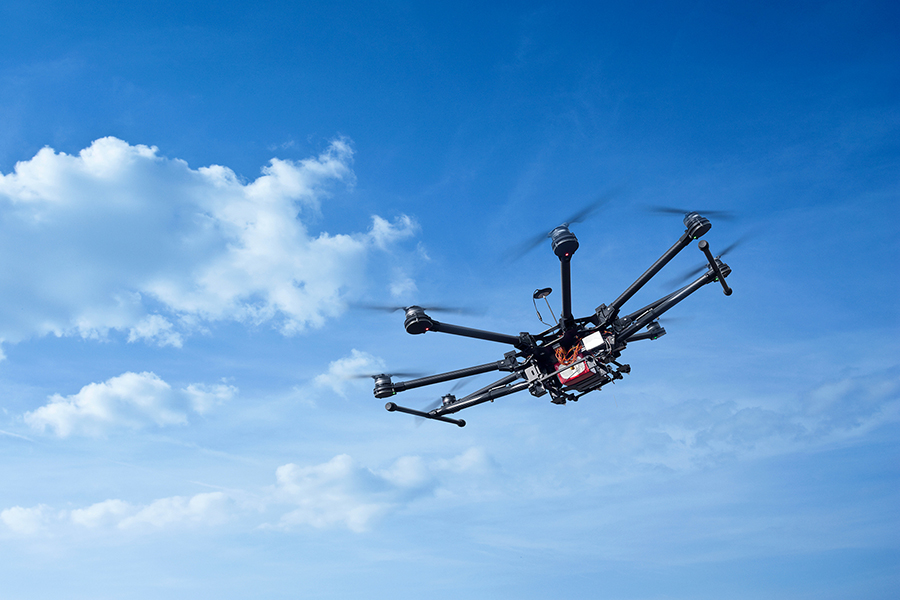New Purdue centers shaping the future

ECE leading the way in autonomous UAS research and development, the future beyond 5G, and cutting-edge AI and HPC tools
Elmore Center for Uncrewed Aircraft Systems
The Elmore Center for Uncrewed Aircraft Systems (UAS) will conduct research on advanced control algorithms and develop prototypes for safe, trustable, and economic autonomous UAS. This center is a multidisciplinary effort led by faculty from the Elmore Family School of Electrical and Computer Engineering. Yung-Hsiang Lu, professor of electrical and computer engineering, is the center lead. Shreyas Sundaram, Marie Gordon Professor of Electrical and Computer Engineering is the co-lead. The center will provide a tiered approach to create and evaluate commercially viable UAS technologies. The first tier uses simulation to evaluate control algorithms and artificial intelligence for situational understanding. The second tier builds miniature cities and conducts experiments in natural and controlled environments at Purdue UAS Research and Test Facility (PURT). PURT houses the largest indoor motion-capture environment in the world with an area of 20,000 sq ft and a ceiling 30 ft high. The motion-capture system provides ground truth data for algorithm development and enables virtual and augmented reality. The third tier conducts outdoor experiments with line of sight between the UAV and the researchers. The fourth tier launches experiments beyond line of sight.

XGC Center Looks at 5G and Beyond
The overall question driving the research of Purdue Universitys NEXT G Center (XGC) for Communications and Sensing is “What comes after 5G?” The team for the center is primarily made up of faculty from the Elmore Family School of Electrical and Computer Engineering. David J. Love, Nick Trbovich Professor of Electrical and Computer Engineering, is director of the center.
The centers research includes the following thrusts:
- Advanced broadband connectivity with the goal of achieving higher data rates, lower latencies, and improved reliability that would serve as the foundation for emerging applications, such as autonomous vehicles, advanced gaming, AR/VR, and telemedicine.
- Wireless research impacting agriculture and rural activities. James V. Krogmeier, professor of electrical and computer engineering, says this involves wireless capabilities far from traditional infrastructure.
XGC is also partnering with the Vertically Integrated Projects (VIP) Program, which provides an opportunity for undergraduate students to earn academic credit while engaging in research and design projects related to active research areas of Purdue faculty members and national, international, and industry-sponsored design challenges.

